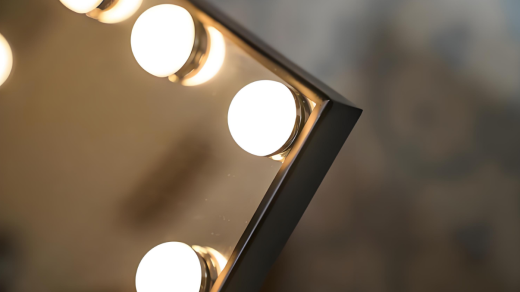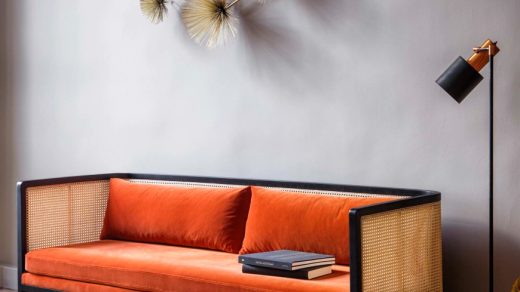When it comes to dining out, the food is not the only thing that matters. The atmosphere and ambience of a restaurant play a crucial role in creating a memorable dining experience. From the moment customers walk through the door, they should feel welcomed and comfortable. One of the key elements in creating this welcoming atmosphere is lighting. Lighting sets the mood and can greatly influence how customers perceive their dining experience.
Key Takeaways
- Creating the right ambience in a restaurant is crucial for a memorable dining experience.
- Lighting Glikaw plays a significant role in setting the mood and enhancing the overall atmosphere.
- Choosing the right lighting fixtures and color temperature can create a warm and cozy environment.
- Incorporating dimmers and lighting controls can add versatility to the lighting system.
- Proper maintenance and upkeep of the lighting system is essential for maintaining the desired ambience.
The Importance of Lighting in the Dining Experience
Lighting has a significant impact on the overall dining experience. It can affect everything from the mood and ambiance to the presentation of food. The right lighting can make customers feel relaxed, comfortable, and even enhance their enjoyment of the meal. On the other hand, poor lighting can create a cold and unwelcoming atmosphere, making customers feel rushed or uncomfortable.
Psychologically, lighting has been shown to have a profound effect on people’s emotions and behavior. Soft, warm lighting can create a cozy and intimate atmosphere, while bright, cool lighting can create a more energetic and lively environment. By carefully selecting and designing the lighting in your restaurant, you can create the desired mood and enhance the overall dining experience for your customers.
Choosing the Right Lighting Fixtures for Your Restaurant
When choosing lighting fixtures for your restaurant, there are several factors to consider. First and foremost, you need to consider the function of each area in your restaurant. Different areas may require different types of lighting fixtures to create the desired atmosphere. For example, you may want to use softer lighting in the dining area to create a warm and cozy ambiance, while brighter lighting may be more suitable for the bar area.
In addition to function, you also need to consider aesthetics. The lighting fixtures you choose should complement the overall design and style of your restaurant. Whether you have a modern or traditional decor, there are plenty of lighting options available to suit your needs. From chandeliers and pendant lights to wall sconces and track lighting, the possibilities are endless.
Creating a Warm and Cozy Atmosphere with Soft Lighting
| Metrics | Description |
|---|---|
| Lighting Temperature | The temperature of the lighting used to create a warm and cozy atmosphere should be between 2700K and 3000K. |
| Lighting Intensity | The intensity of the lighting should be low to create a soft and relaxing atmosphere. |
| Lighting Placement | The lighting should be placed strategically to create a warm and cozy atmosphere. For example, placing lamps in corners or using string lights to create a soft glow. |
| Color Scheme | The color scheme of the room should be warm and inviting, such as using earthy tones or soft pastels. |
| Texture | Using soft textures, such as plush blankets or fluffy pillows, can add to the cozy atmosphere. |
Soft lighting is often used in restaurants to create a warm and cozy atmosphere. It can make customers feel more relaxed and comfortable, encouraging them to stay longer and enjoy their meal. Soft lighting can be achieved through the use of dimmers, which allow you to adjust the brightness of the lights to create the desired ambiance.
There are several types of soft lighting fixtures that can be used in a restaurant. Pendant lights with fabric shades can create a soft and diffused light, while wall sconces with frosted glass can provide a warm and inviting glow. Candles are also a popular choice for creating a cozy atmosphere, especially in intimate dining areas.
Using Color Temperature to Enhance the Dining Experience
Color temperature is another important factor to consider when choosing lighting for your restaurant. Color temperature refers to the warmth or coolness of light, measured in Kelvin (K). Warm light, with a lower color temperature (around 2700K-3000K), creates a cozy and intimate atmosphere, while cool light, with a higher color temperature (around 4000K-5000K), creates a more energetic and lively environment.
To enhance the dining experience, it is important to choose the right color temperature for your restaurant. For example, if you have a fine dining establishment, you may want to use warmer lighting to create a more intimate and romantic atmosphere. On the other hand, if you have a casual and vibrant restaurant, cooler lighting may be more suitable to create a lively and energetic ambiance.
Incorporating Dimmers and Lighting Controls for Versatility

To add versatility to your restaurant’s lighting design, it is recommended to incorporate dimmers and lighting controls. Dimmers allow you to adjust the brightness of the lights, giving you the flexibility to create different moods and atmospheres throughout the day. Lighting controls, such as timers and sensors, can also be used to automate the lighting system and save energy.
By using dimmers and lighting controls, you can easily transition from a bright and energetic atmosphere during lunchtime to a more intimate and cozy ambiance for dinner service. This versatility allows you to cater to different customer preferences and create a unique dining experience.
Highlighting the Food with Accent Lighting
Accent lighting is a great way to enhance the presentation of food in your restaurant. It can draw attention to specific areas or objects, such as artwork, displays, or food displays. By strategically placing accent lighting fixtures, you can create focal points and highlight the beauty of your culinary creations.
There are several types of accent lighting fixtures that can be used in a restaurant. Track lighting is a popular choice as it allows you to easily adjust the direction of the light to highlight different areas. Under-cabinet lighting can be used to illuminate countertops or food displays, while recessed spotlights can be used to create dramatic effects.
Creating a Romantic Ambience with Candlelight
Candlelight has long been associated with romance and intimacy. It creates a soft and warm glow that instantly sets a romantic mood. Incorporating candles into your restaurant’s lighting design can add a touch of elegance and create a memorable dining experience for your customers.
There are several ways to incorporate candles into your restaurant’s lighting design. You can use candle holders on tables or create candlelit centerpieces. You can also use wall sconces with candle-shaped bulbs or even install candle chandeliers for a more dramatic effect. However, it is important to ensure that candles are placed safely and do not pose a fire hazard.
Using Lighting to Enhance Your Restaurant’s Brand Identity
Lighting can also be used to enhance your restaurant’s brand identity. The lighting design should reflect the overall theme and style of your restaurant, helping to reinforce your brand image. For example, if you have a modern and sleek restaurant, you may want to use minimalist lighting fixtures with clean lines. On the other hand, if you have a rustic and cozy restaurant, you may want to use vintage or industrial-style lighting fixtures.
By carefully selecting lighting fixtures that align with your brand identity, you can create a cohesive and memorable dining experience for your customers. Lighting can help create a unique atmosphere that sets your restaurant apart from the competition.
Maintenance and Upkeep of Your Restaurant’s Lighting System
Once you have designed and installed your restaurant’s lighting system, it is important to properly maintain and upkeep it. Regular maintenance ensures that your lighting fixtures are in good condition and functioning properly. It also helps to extend the lifespan of your fixtures and prevent any potential issues.
Some tips for maintaining your restaurant’s lighting system include regularly cleaning the fixtures to remove dust and debris, checking for any loose or damaged wiring, and replacing any burnt-out bulbs promptly. It is also important to schedule regular inspections by a professional electrician to ensure that everything is in working order.
The impact of lighting on the dining experience cannot be overstated. By choosing the right lighting fixtures and design, you can create a welcoming atmosphere that enhances your restaurant’s brand identity. From creating a warm and cozy ambiance with soft lighting to using accent lighting to highlight food presentations, there are endless possibilities for creating a memorable dining experience. By incorporating dimmers and lighting controls, you can add versatility to your lighting design, while candlelight can create a romantic ambience. Ultimately, by paying attention to the details of your restaurant’s lighting system and properly maintaining it, you can create an unforgettable dining experience for your customers.




